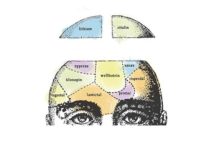A new study, published in the British Medical Journal, investigates the prevalence of off-label prescribing for antidepressant medication in primary care settings. The results of the study, conducted in Quebec, Canada, demonstrate that only 15.9% of off-label prescriptions are supported by strong scientific evidence. The authors find 44.6% of off-label prescriptions lack scientific support.
“These findings highlight an urgent need to produce more evidence on the risks and benefits of off-label antidepressant use and to provide physicians with this evidence at the point of prescribing,” write the researchers, led by Jenna Wong, faculty at McGill University in Montréal, Canada.

The use of antidepressants has dramatically increased in western countries. In England, 3.9 million more antidepressants were dispensed in 2015 compared to 2014, a 6.8% increase. Part of the reason for this increased use is ‘off-label’ prescriptions. A drug is considered off-label when it is prescribed for a treatment indication that has not been approved by the country’s governing agency that oversees prescription drugs, such as the US Food and Drug Administration (FDA), Health Canada, or European Medicines Agency.
Psychiatric medications are among the most common to be prescribed off-label. Many concerns have been raised about off-label prescribing of psychiatric medications, including an increase in off-label prescribing for children diagnosed with ADHD. Users of medication for off-label purposes have a 54% higher risk of adverse events, experiencing side effects about 50% of the time.
In a previous study, the authors found that off-label prescribing for antidepressants is common in Canada, with 29% of antidepressant prescriptions being off-label. The study indicated that, for antidepressant medications not prescribed for depression, 2/3 of prescriptions were off-label.
“Inefficacious antidepressant use is a concern because it creates unnecessary costs and puts patients at risk of experiencing burdensome side effects and serious adverse events that could be avoided,” explain the authors.
The implementation of electronic prescribing that links prescriptions to treatment indications provides a new opportunity to study off-label prescribing. Using electronic prescribing data in Quebec, Canada, the researchers “examine off-label indications for antidepressants in primary care and assess the level of scientific evidence supporting these off-label prescriptions.”
Data was collected from 2003-2015 and any adult patient who received an antidepressant prescription was included in the study. Drugs were considered on-label if they had been approved for the given treatment indication by either Health Canada or the USFDA as of 2015.
Antidepressant drugs were categorized as “strong evidence for the prescribed drug, no strong evidence for the prescribed drug but strong evidence for another drug in the same class, or no strong evidence for the prescribed drug and all other drugs in the same class.” The DRUG-DEX compendium was used to determine if there was strong evidence for off-label use. Drugs were considered to have strong scientific evidence if research showed efficacy for the indication, the drug was recommended for most or all patients with the indication, and the evidence included at least one Randomized Clinical Trial (the gold standard to assess drug efficacy) to test the indication.
The results indicate that 29.3% of antidepressant prescriptions were off-label. Prevalence rates for off-label prescriptions were calculated by the number of off-label prescriptions for a drug divided by all prescriptions for that drug or class of drugs.
The class of tricyclic antidepressants (TCAs) had the highest prevalence (81.4%) of off-label use. This high rate was due to the use of amitriptyline (prevalence rate 93.0%) for pain, insomnia, or migraines. The use of amitriptyline for pain is supported by strong scientific evidence. However, 26.0% of off-label TCA prescriptions lacked scientific support.
Trazodone also had a high off-label prevalence rate (82.5%). This was mostly due to trazodone being prescribed off-label for insomnia. Despite the fact that using trazodone to treat insomnia is not evidence-based, these prescriptions accounted for 26.2% of all off-label prescriptions.
Serotonin-norepinephrine reuptake inhibitors (SNRIs) had the lowest prevalence rate (6.1%) followed by selective serotonin reuptake inhibitors (21.8%). Since prevalence rates were based on the percentage of off-label prescriptions compared to all drug prescriptions (on- and off-label), the researchers explain, “SSRIs and SNRIs had a lower prevalence of off-label indications because they were more frequently prescribed for depression than TCAs, which by definition was an approved indication for all antidepressants.” Still, 53.7% of off-label SNRI prescriptions lacked scientific support.
The authors find, “Only three of these 143 off-label drug indication pairs met the predefined criteria for having strong scientific evidence: amitriptyline (a TCA) for pain, escitalopram (an SSRI) for panic disorders, and venlafaxine (an SNRI) for obsessive compulsive disorder.” These pairs accounted for only 15.9% of all off-label prescriptions.
An additional 39.6% of off-label prescriptions lacked strong scientific evidence for the drug used, but had strong scientific evidence for another drug in the same class. SSRIs had the highest rate (92.0%) of a drug from the same class showing strong scientific evidence. This left 44.6% of off-label prescriptions lacking strong scientific evidence either for the drug prescribed or any other drug in the same class.
This study supports previous research that found nearly a third of all antidepressants are prescribed off-label and provides further information on how commonly antidepressants are prescribed without strong scientific evidence. The authors state, “our findings
The authors state, “our findings emphasize the importance of considering the level of evidence supporting risk-benefit when prescribing an antidepressant, especially if the drug is known to have important adverse side effects.”
The authors provide a number of contextual factors that may explain the high rates of off-label prescribing. First, the proliferation of antidepressants makes it difficult for prescribers to stay informed about approved indications. The authors suggest that electronic prescribing systems could aid providers by warning them when their chosen treatment indication is not supported by evidence.
“Technologies such as indication based e-prescribing systems and electronic health records have the potential to become essential components of effective post-market drug surveillance systems for monitoring and evaluating off-label antidepressant use,” suggest the researchers.
Also, when a patient’s insurance does not cover a drug that is supported by evidence, prescribers may choose a drug in the same class that is covered. However, the authors caution, “class effects cannot be assumed because even slight differences in chemical structure between drugs can alter their pharmacodynamics and pharmacokinetic properties, leading to clinically relevant differences in efficacy and risk.”
Prescribers may also be choosing an off-label drug when an on-label drug is contraindicated for the patient for other reasons. Lastly, providers often prescribe medications for symptoms, rather than conditions with approved medications. The authors explain, “Primary care physicians could be struggling to find effective treatments for these conditions and thus prescribe antidepressants as a last resort, indicating a gap in needed pharmacotherapy.”
The authors conclude, “When evidence to support efficacy is lacking, physicians should exercise caution, prescribe conservatively, and inform patients of this information via a shared decision making process.”
****
Wong, J., Motulsky, A., Abrahamowicz, M., Eguale, T., Buckeridge, D. L., & Tamblyn, R. (2017). Off-label indications for antidepressants in primary care: Descriptive study of prescriptions from an indication based electronic prescribing system. British Medical Journal, 356, j603. http://dx.doi.org/10.1136/bmj.j603 (Abstract)














I would hazard to say that all “antidepressant” use is without any strong scientific evidence since the use of these devil’s tic tacs is based on a myth about “chemical imbalances” that doesn’t exist. There never has been any real strong scientific evidence for “antidepressants”. They work no better than placebo. And the same thing goes for “antipsychotics”. They do not cure any chemical imbalances; they are nothing more than tranquilizers. It’s more proper to call them neuroleptics. In fact, both of these drugs cause chemical imbalances.
Mama…..mama…..the emperor has no clothes!
Report comment
My thoughts exactly…there’s just as much scientific evidence for prescribing them off-label as there is for prescribing them on-label…..NONE.
Plus, prescribing them at all risks great harm as they CREATE chemical imbalances in the brain (and probably gut also), are addictive, and have horrible side effect profiles.
The argument isn’t about whether they are prescribed off-label, it’s about whether they should have been approved in the first place, and now we know the extent of the misrepresentations of their efficacy and safety that got them approved, whether that approval should be revoked and they should be removed from the marketplace.
Report comment
Stephen, I agree on the antidepressants.
But the antipsychotics are more than just tranquilizers. If the doctor’s wish is to make a patient suffer from the negative symptoms of “schizophrenia,” the neuroleptics do this via neuroleptic induced deficit syndrome. And if the doctor’s wish is make the patient suffer from the positive symptoms of “schizophrenia,” the antipsychotics can also make the patient “psychotic,” via anticholinergic toxidrome as well.
https://en.wikipedia.org/wiki/Neuroleptic-Induced_Deficit_Syndrome
https://en.wikipedia.org/wiki/Toxidrome
So the antipsychotics are drugs that create both the negative and positive symptoms of “schizophrenia,” all by themselves. It’s a shame these psychiatric drug induced toxidrome/syndrome aren’t listed in the DSM, because this means none of the so called “mental health professionals” know this, which causes them to misdiagnose and mistreat all their patients.
Perhaps someone will recommend these toxidrome/syndrome are added to the DSM?
“Mama…..mama…..the emperor has no clothes!”
Report comment
Exactly, and yet the doctors refuse to recognize that the very drugs that are supposed to help people are actually causing the problems. Working in the “hospital” where I do my co-worker and I often see this happening with many people on the units and yet the doctors state that this is “the result of their worsening illness of schizophrenia”, which then leads to the people getting more drugs! This is absolutely crazy and we watch it happening each and every day. It’s got to come to a stop soon.
Report comment
And then what is one to do after the drugs have created the “chemical imbalance” that is said not to exist?
Report comment
This is a good question.
I think that people are just left hanging. Very few GP’s or psychiatrists will admit that there is no “chemical imbalance” to begin with and then when people develop real problems because of the damned drugs they’re told that what they are experiencing is no longer “depression”, they’re “bi-polar”. You get more labels which then lead to drugs like the so-called antipsychotics, which should actually be called neuroleptics or neurotoxins. And when you become suicidal or homicidal it’s your fault, not the fault of the drugs that caused a true chemical imbalance after you took them.
Very few doctors know that these drugs cause withdrawal when you try to get off them and very few doctors, particularly psychiatrists even know how to begin titrating you off them. You’ve got to go to the internet and find good websites that can help you wean yourself off the damned drugs.
Doctors and psychiatrists give these drugs to people and then want nothing to do with anything after everything falls apart for people in their care. You are in a Catch-22 situation once you start down the road to ingesting these things in hopes of finding some relief and health for yourself.
Report comment
Prescribing psychotropic type drugs off label violates conscious informed consent and is unethical. What happens to the patient who sees a doctor for an unrelated issue, is prescribed these drugs, has all the side effects they’re given for, including poor quality of life, yet doesn’t know why they are suffering? A doctor prescribed me a drug a mass shooter was on. I suppose she should be glad I didn’t show up at her office? I wouldn’t take a drug again. If they can’t be a humane , truthful caregiver then perhaps they should find another profession.
Report comment
On label prescribing of antidepressants also lack any kind of scientific justification.the placebo group in almost all studies is a completely abrupt cold turkey withdrawal group. Patients are withdrawn from their previous drug and given placebo for a washout period of about a week. This makes all patients a lot worse naturally. Just read stories about patients missing only one dose of Paroxetine. So by the end of the week all patients are typically doing a lot worse than when the trial started , they are all in cold turkey withdrawal, and very prone to suicide, akathisia etc.
Then half of the group receive an antidepressant very similar to the one they were on before, and the other half, the placebo group get to continue in free fall cold turkey withdrawal.
So antidepressant research is not testing the effect of antidepressants in depression, but only how well they relieve withdrawal symptoms from cold turkeying the previous drug. The severely depressed just had higher doses of the previous drug or longer exposure and therefore got a heavier cold turkey reaction that was then somewhat ameliorated by the next drug.
We could get extremely good results if we tested alcohol like this. It would look like a fantastic effect, having the placebo group in delirium while the drug group had their alcohol back.
Report comment
We should be mad in America. Who is diagnosing in the first place? Did they do blood work for allergies, toxins or any other physical issue? Did they find the underlying issue for emotional unhappiness? Was there abuse, job loss, divorce, sleep depravation, drug side effects etc? I don’t believe in mental illness but have seen and heard people who are so psychotic and fixated on everyone but themselves who impose labels and drugs on innocent people.
Report comment
This quotation to my mind applies to all of psychiatry:
One of the saddest lessons of history is this: If we’ve been bamboozled long enough, we tend to reject any evidence of the bamboozle. We’re no longer interested in finding out the truth. The bamboozle has captured us. It’s simply too painful to acknowledge, even to ourselves, that we’ve been taken. Once you give a charlatan power over you, you almost never get it back.
-Carl Sagan, astronomer and writer (1934-1996)
Those of us who have gotten our power back are extremely fortunate.
Report comment
“With great power comes great responsibility”.
“Those who know do not speak” – Tao
“In the end we will remember not the words of our enemies, but the silence of our friends”. MLK
Report comment
Any prescribing of any kinds of mood altering drugs is no different than selling people street drugs. We must remove all legitimacy from this. And I say, when it is done with juveniles, prosecute it in the International Court as Crimes Against Humanity.
Nomadic
Report comment
I agree with you Nomad. Just like kids using street drugs don’t fully understand the severity of potential side effects, when someone is prescribed these drugs off label they can suffer and not know why. When I asked for help with sleep, I was prescribed Abilify by a Dr who said don’t worry you’re not crazy as I was in a verbally abusive marriage. I went to another doctor who said he doesn’t prescribe this drug as it has so many side affects. After I disco’d the drug, I found out it causes depression, anxiety etc and it’s prescribed for bipolar and schizophrenia! They don’t even know how this drug works. Prescribing off-label, without conscious informed consent and for an unrelated issue is totally unethical and should be illegal as it destroys lives.
Report comment
Doctors have been insanely suggesting antidepressants to me forever. I have 80 plus broken bones, and was a victim of severe abuse for 22 years. Yes, I was clinically depressed for a short time. Now, I am not. What I am is a chronic pain patient with MS. The MS developed as the pro football players brain lesions did, from blows to my head. I see a good, compassionate group of pain control physicians and they are separate from primary care. My primary care doctor of 30 years retired, and I have now an idiot who is allowing my body to stay covered in sores from chronic hives, has taken my 30mg per day of Valium ( yes, I have terrible panic attacks, and equally terrible muscle spasms )and now, based on one day of good blood pressure, has taken away my blood pressure medicine. Who do I report this “doctor” to ? He is going too far!!!
Report comment